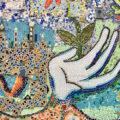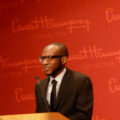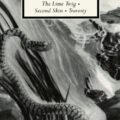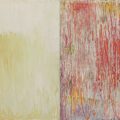The Audacity of Veracity
1.
Historical fiction is an audacious enterprise forever at risk of succumbing to arrogance. After countless hours of painstaking research into an historical event or figure of interest, what could possibly be the advantage of fictionalizing the findings? One might share the view of such writers as A.S. Byatt and Hilary Mantel, that in historical novels the vast aesthetic resources of fiction allow the texture of a particular milieu to be evoked more convincingly than do the comparatively limited aesthetics of strict historical scholarship. But that assumption is itself a textbook example of audacity succumbing to arrogance. It implies, first, that the novelist’s imagination is better able than the historical record to disclose certain historical “truths,” and second, that the novelist thus has every right to co-opt historical persons for use as literary props with which to burnish the verisimilitude of whatever his or her imagination happens to conjure up.
Alternatively, one might share the view of W.G. Sebald, who proposed using not only historical fiction but literature in general as a means of providing “restitution” to those individuals crushed, rendered voiceless, and left marginalized by historical events—“a restitution,” wrote Sebald, “over and above the mere recital of facts and over and above scholarship.” In practice, this may entail the demolition of the cultural myths that legitimized such marginalization, as in Cormac McCarthy’s Blood Meridian, or it may involve a compassionate re-imagining of the experience of marginalization, as in Edward P. Jones’ The Known World. In either case, the most sophisticated historical fiction of recent years has been animated by Sebald’s sentiments; it has responded to the question that haunts the genre of historical fiction by elaborating on the response that Sebald sketched out.
In her historical novel Utopian Man, though, Australian author Lisa Lang advances a somewhat different response to that question which makes her book, for much of its length, a dazzlingly intelligent and aesthetically disciplined contribution to the genre. Lang seems to propose a certain savage truth about the march of history: that, at bottom, it is the simple unfolding of entropy. With this in mind, she approaches historical fiction aware that narrative cohesion is destined, or doomed, to be upset by the sloppiness of the unvarnished historical record. Rather than attempting to overcome the entropy of history, Lang entertains it. She offers a novel whose acceptance of the chaotic events seems designed to frustrate readers who expect an orderly narrative in the vein of Byatt, Mantel, and their cohort. Ostensibly setting out to shape the life of a man into an entertaining and accessible story, Lang abandons that enterprise and begins to shine a light on its inevitable shortcomings. The result is a minor triumph: not without its share of failures, but a captivating, challenging, and rewarding work of fiction that succeeds despite the weaknesses of its final pages.
Utopian Man opens in 1918 on the deathbed of Edward William Cole, and recounts in flashback how and with what hopes Cole transformed a glorified bookstore at the bottom of the world into an egalitarian intellectual empire. Born in England in 1832, Cole emigrated to Australia in his twenties and amassed a small fortune at the peak of the Victorian gold rush. In 1874, he used his wealth to establish a modest bookstore in the Victorian capital of Melbourne; and then, a decade later, he used the profit from that venture to found what would become his world-renowned “Book Arcade” in the heart of the city.
In 1883, when he flung open the Arcade’s doors, Cole claimed to house more than a million books under a single roof, all of them available for private purchase or simply for enjoyment on the premises at no cost to the reader. In Lang’s fictionalization of his story, he refuses to abide the thought “that a single customer be turned away, intimidated, or made to feel out of place when he has come with intentions of reading and learning.” Between 1883 and the early years of the twentieth century, the expanding Book Arcade devoured most of a city block in order to accommodate not only countless new books but also an assortment of curiosities sent to the Antipodes in this age of discovery: a giant squid preserved for public display; a stuffed polar bear that doubled as a hatstand; a robotic chicken that laid tin eggs at the press of a button; a brass band hired to provide free entertainment during an economic recession; a collection of fun house mirrors; a Chinese tea salon; a makeshift rain forest, a room full of chattering monkeys—and more. In its own way, each fantastic new acquisition satisfied some inexplicable hunger in the soul of the man who purchased it; but, to the credit of his biographer, Utopian Man neither attempts to explain the provenance of that hunger nor even to consider the notion that someone in the present day could ever explain the yearnings of a man from a bygone age.
2.
But wait: how can I reasonably refer to Lisa Lang as the biographer of E.W. Cole after identifying Utopian Man as a work of historical fiction? Not without justification. Lang actually is Cole’s biographer, having taken him as the subject of her previous book, E.W. Cole: Chasing the Rainbow, a non-fiction account of Cole’s life festooned with lavish photographs of the man himself, his friends and family, and the Book Arcade in all its diversity.
However, despite some obvious overlap, Lang’s two books on Cole are distinct. WhereUtopian Man largely restricts its scope to Cole’s life in the years after the establishment of the Book Arcade, Chasing the Rainbow revels in his surreal exploits over the decades before the idea of the Arcade even occurred to him. In Chasing the Rainbow, Lang admits that Cole didn’t make his entire fortune on the goldfields; he also worked odd jobs selling cordial and pies. Not content with the intellectual vacuity of such menial labor, he set about compiling a theological and philosophical treatise of epic length that failed to catch on with the reading public. At one point, he tried to make money—or perhaps just to make a name for himself—by placing a trademark on the rainbow. When, in middle-age, he decided he should settle down, he found himself a wife by placing a newspaper advertisement announcing his desire to wed. All but the last of these quirks are disclosed in Lang’s biography but absent from her novel. The two books supplement and complement one another rather than offering factual and fictional variations on the same set of events.
So, with her biographical skills already proven, Lang’s fictionalization of Cole’s life seems all the more audacious and thus raises anew the question of the advantage of the fictionalization of history. In Utopian Man, Lang seems to respond that a fictionalization of Cole’s life allows for a more direct communication of the essence of the man’s character than she could achieve via pure biography—not because fiction allows her to more convincingly evoke his milieu, to chronicle his thoughts, or to give voice to the voiceless of his era, but because the particularities of fiction allow her to replicate and thus communicate the essence of his character. Early in the novel, she actually casts doubt on the possibility that a book—any book—could ever faithfully convey the essential character of a man like Edward William Cole by recounting the facts of his life, and thereafter she attempts to use a particularly non-linear novelistic structure to convey what historical narrative cannot.
“He was twenty-five the first time he entered a large public library,” Lang writes of Cole early in Utopian Man, “and [he] was almost flattened by the weight of his own ignorance. There was just so much there. He had hoped to find a book on carpentry; there were more than a dozen. . . . [T]he sudden excess of light and space and knowledge was brutal.” Immediately, then, the book gives voice to the notion that books themselves are capable of familiarizing readers with whatever subject might court one’s curiosity or stroke one’s sense of wonder—and an earnest faith in the truth of that notion is exactly what led Cole himself to invest in his Book Arcade:
Four hundred feet of cedar shelving. Seven hundred thousand books. Everything from geology to gladiators, Persian myths to phrenology, Buddhism to pigeon breeding. Too many books for a city this size; he may have got carried away. But that is the point. Let them see for themselves how wide the world is. Let them see what it can hold.
His dearest hope is that, in offering the denizens of Melbourne an opportunity and an incentive to read about the wider world in all its overwhelming complexity and variety, he will be able to turn them into compassionate global citizens by providing them with a means to conquer their instinctual fears of the differences that divide the peoples of the world. “The Arcade,” he thinks to himself, “is the opposite of violence, the opposite of fear, of all the forces that close us off from the world and ourselves. The Arcade is the opening up.” For the philanthropist, the building of the Arcade is his best shot at sowing the seeds of world peace.
Against this notion, however, Utopian Man also suggests that human beings are too unique and too complex to achieve true mutual understanding, and that the effort to become familiar with another person is destined to entail a recognition of that person’s irreducible uniqueness and unfathomable complexity. In the novel’s opening scene, the dying Cole reflects on his relationship with his adult children as they gather around him. “Once,” we are told, “[he] knew, precisely, how to make them laugh, or squirm with excitement. He knew their fears…. But as they had grown, they had somehow grown strange to him, and now he knew them less well than he did when they were nine or ten.” So the narrative immediately advances the idea that books can intimately familiarize readers with their subjects, and yet suggests that familiarity is bound to elude readers if the subject of a book is a human being. Thus, Utopian Man places itself in a double bind. How can it then escape?
Lang’s solution is to structure her account of Cole’s life in a way that effectively mimics his own behavior, so the novel is infused with the sentiments of the man at its center. Edward William Cole simply could not sit still, could not concentrate on any one thing at any one time, could not help but dash around frantically hither and yon in pursuit of whatever curiosities caught his attention and in satisfaction of whatever compulsions demanded it.Utopian Man is a book after Cole’s own heart. Each chapter covers one year of his life and typically compresses the events of twelve months into little more than a dozen manic pages. And even then, vast tracts of time containing enormously significant events are silently bypassed in the years between one chapter and the next.
When the bankruptcy of a single man brings down an entire colonial government, the catastrophe unfolds outside the scope of the narrative; when Federation at last comes to Australia, with six separate British colonies coming together to forge the world’s only continental nation, it is acknowledged and dismissed in a sentence or two; when Mark Twain pays a visit to Melbourne, we do not learn that he enjoyed tea with Cole until their meeting has already taken place and Twain has been and gone and left Australia altogether; and—incredibly, for a book about a man so preoccupied with world peace—the entirety of the First World War slips by without remark. Characters are often introduced without description and their actions recounted without explanation or elaborations on their significance. The conduct of certain figures, not least Cole himself, seems to be guided as much by causal logic as the peregrinations of motes struck by a beam of light.
Although the novel is garnished with the conventionally requisite superficialities of contemporary literary fiction—lyrical prose, elaborate scene-setting, occasional rising action followed by swift denouement—it barely attempts to construe a drama from the sheer variety of Cole’s life; and although it glances at Cole’s youth and his travels through the Australian interior, it makes no attempt to account for the biographical, psychological, and world-historical forces that forged this peculiar man. Lang’s structure is remarkably unconventional for historical fiction, and is directed towards equally unconventional ends; but it’s veiled by prose that is, on the surface, wholly conventional. Utopian Man advances a literary experiment in stealth. Even as it wears the conventions of historical fiction, it dismisses the narrative coherence and character development that readers tend to expect from the genre.
3.
Of course, flaunting the conventions of historical fiction is bound to discomfit readers who would prefer to see them followed, and reviewers in Cole’s hometown are no exception. On the blog of the Melbourne journal Meanjin, Jack Nicholls ultimately praises the novel but complains that “[i]t skips from year to year a little too quickly, [and] its secondary characters are only skin-deep.” More prominently, in the major Melbourne broadsheet The Age, James Ley describes Utopian Man as “only a qualified success,” suggesting that, among other things, its “tendency to narrative fragmentation. . . limits the novel’s dramatic power, to the point where it can seem to be offering a series of occurrences rather than a purposeful plot that is developing and deepening.”
I must agree with Ley that Utopian Man is “only a qualified success,” which is what I mean when I call the novel a “minor triumph.” But whereas Ley sees its success qualified by the absence of narrative cohesion and character development, I see the book’s success qualified by a climax in which cohesion is imposed on the fragmentation that dominates the rest of the novel—a climax in which Lisa Lang submits to the demands of contemporary literary conventions.
Towards the end of the nineteenth century, E.W. Cole purchased a printing press for the Book Arcade and, soon enough, he began to use it for reasons more political than strictly professional:
He has begun to see the advantage of owning a press… the personal advantage of publishing whatever he likes. He has begun writing pamphlets. Modest tracts on topics that take his fancy: the dangers of smoking, the foolishness of fashion, the importance of hobbies, the history of the apple. He leaves the pamphlets on the Arcade’s counters, beside the registers, for people to take as they please.
“It’s a pastime of his,” we are told, “a minor indulgence,” and it isn’t long before his indulgence lands him in hot water.
In 1894, Cole printed a pamphlet in which he articulated a set of racial politics that were highly controversial for his era: he believed in nothing less than unequivocal racial equality. The Australian people weren’t persuaded, of course, but Cole had fate on his side and one day he found on his doorstep a man named Simon Gabriel, who offered to simultaneously help Cole demonstrate the validity of his politics and satisfy Cole’s penchant for placing curiosities on display in the Book Arcade. Incredibly, Simon Gabriel was a black man whose skin had turned entirely white, a man of African descent who appeared wholly Caucasian by the time he reached middle-age. He offered to stand in the Book Arcade and ask patrons to name his country of origin; and when not one of the scores of respondents suspected that he was of anything other than European stock, Cole’s pleas for racial equality obtained some empirical justification. That event allows Lisa Lang to strike harmony between the curiosities that feed Cole’s fascination with the world at large and his frustration with the world’s petty prejudices. But shortly thereafter, Lang attempts to establish a conflict between Cole’s politics and his personal life that seems obviously contrived given what we have thus far learnt about the man.
Cole develops a friendship with Alfred Deakin, the colonial administrator who would go on to become Australia’s second Prime Minister after Federation. As Prime Minister, of course, Deakin was responsible for implementing arguably the greatest blight on Australia’s political record: the so-called “White Australia” policy, designed, on the one hand, to breed out Australia’s indigenous peoples, and, on the other hand, to close off the continent to anyone who didn’t have white skin, particularly the Chinese. Naturally, Cole opposed the policy—he had close friends of Chinese descent, to say nothing of Simon Gabriel—but in the climax ofUtopian Man, when his beloved son descends into drug addiction as a patron of the opium dens in Melbourne’s Chinatown, Cole is immediately suspicious that the Chinese people as a whole are intent on corrupting their European brethren. Perhaps his suspicions represent another loose strand in the messiness of historical reality, but they don’t ring true on the page. Cole’s sudden paranoia reads like an attempt to manufacture narrative drama and thus to impose cohesion upon his narrative, even though a lack of cohesion is one of the greatest features of Utopian Man rather than a flaw in need of correction.
It’s not enough to completely devalue the novel, or undermine its otherwise brilliant narrative technique—although it does serve to remind us how easily the audacity of historical fiction can also succumb to aesthetic complacency. It is remarkable that a debut work of historical fiction could withstand those demands for narrative cohesion for so long. The real pity is that those demands continue to be made—and felt—at all. The result is that Cole, who lived a life too large to be contained by lazy narrative conventions, ultimately does not get his due. “Let them see how wide the world is,” he says of his patrons in the Book Arcade: “Let them see what it can hold.” In Utopian Man, Lisa Lang works hard to treat her readers as Cole wanted his patrons to be treated. For the most part, she does allow us to encounter the sort of aesthetic adventurousness that contemporary conventions do not usually permit; but here’s hoping that in her next novel she herself is allowed to once more engage in it and to see it all the way through to the end.
About Daniel Wood
Daniel Wood is a graduate student, tutor, and lecturer at the University of Melbourne, Australia, where he researches and teaches American literature.





